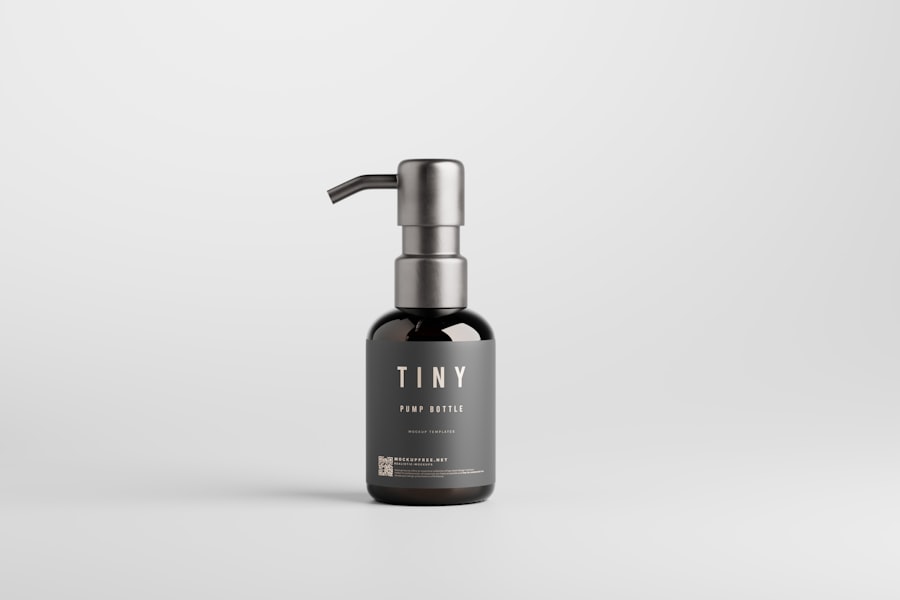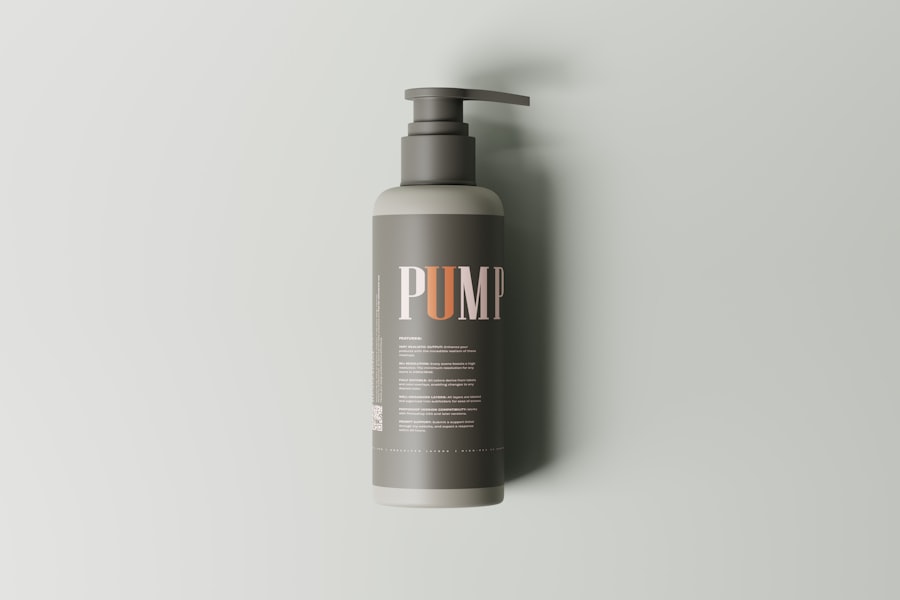Before you even think about picking up a razor, it’s crucial to prepare your skin properly. This step is often overlooked, yet it can make a significant difference in the overall shaving experience. Start by cleansing your skin with a gentle cleanser to remove any dirt, oil, or impurities that may be present.
This not only helps to create a clean canvas for shaving but also reduces the risk of irritation. After cleansing, consider exfoliating your skin lightly. This can help to slough off dead skin cells and prevent them from clogging your razor, which can lead to a smoother shave.
Once your skin is clean and exfoliated, it’s time to hydrate. Applying a warm, damp towel to the area you plan to shave can help open up your pores and soften the hair follicles. This step is particularly important if you’ve recently undergone laser hair removal, as your skin may be more sensitive than usual.
The warmth will not only prepare your hair for cutting but also enhance blood circulation, making the shaving process more effective and comfortable. After this, you can apply a pre-shave oil or lotion to further protect your skin and provide an extra layer of moisture.
Key Takeaways
- Exfoliate the skin before shaving to remove dead skin cells and prevent ingrown hairs
- Choose a shaving cream or gel that is suitable for your skin type to avoid irritation
- Use gentle shaving techniques on post-laser hair removal skin to prevent irritation and damage
- Apply a soothing aftershave or moisturizer to hydrate and protect the skin after shaving
- Shave in the direction of hair growth to minimize irritation and reduce the risk of ingrown hairs
Choosing the Right Shaving Products
Selecting the right shaving products is essential for achieving a smooth and irritation-free shave. Start with a high-quality shaving cream or gel that suits your skin type. If you have sensitive skin, look for products that are fragrance-free and formulated with soothing ingredients like aloe vera or chamomile.
These ingredients can help calm any potential irritation and provide a protective barrier between your skin and the razor. On the other hand, if you have oily or combination skin, you might prefer a gel that offers a cooling effect and helps control excess oil. In addition to shaving cream, consider investing in a good razor.
A multi-blade razor can provide a closer shave, but it’s essential to choose one that feels comfortable in your hand. If you have sensitive skin, you might want to opt for a single-blade razor or one designed specifically for sensitive areas. Remember that dull blades can lead to nicks and cuts, so always ensure your razor is sharp and in good condition before you start shaving.
Shaving Techniques for Post-Laser Hair Removal Skin

If you’ve recently undergone laser hair removal, your skin may be more delicate than usual, requiring special attention during shaving. Begin by using light pressure when gliding the razor over your skin. Avoid pressing too hard, as this can lead to irritation or even cuts on sensitive areas.
Instead, let the weight of the razor do most of the work for you. Shaving in the direction of hair growth can also minimize discomfort and reduce the risk of ingrown hairs. Another effective technique is to use short strokes rather than long ones.
This approach allows for better control and precision, especially in areas where the skin may be more sensitive or uneven. Rinse the blade frequently under warm water to keep it clean and free from hair buildup. This not only ensures a smoother shave but also helps prevent any potential irritation caused by clogged blades.
If you notice any discomfort during shaving, it’s wise to stop and reassess your technique or the products you’re using.
Post-Shave Skin Care
| Product | Benefits | Usage |
|---|---|---|
| Aftershave Lotion | Soothes skin, reduces irritation | Apply a small amount to shaved area |
| Moisturizer | Hydrates and nourishes skin | Apply to clean, dry skin after shaving |
| Alum Block | Stops bleeding from nicks and cuts | Wet block and apply to affected area |
After you’ve completed your shave, it’s essential to take care of your skin to maintain its health and appearance. Start by rinsing your skin with cool water to close the pores and soothe any irritation that may have occurred during shaving. Pat your skin dry with a soft towel—avoid rubbing, as this can exacerbate any sensitivity.
Once your skin is dry, apply a gentle aftershave balm or lotion that contains hydrating ingredients like hyaluronic acid or glycerin. These ingredients will help replenish moisture and create a protective barrier on your skin. In addition to aftershave products, consider incorporating a soothing serum into your post-shave routine.
Look for serums that contain ingredients like vitamin E or tea tree oil, which can help calm inflammation and promote healing. If you experience redness or irritation after shaving, applying a cold compress can also provide immediate relief. Remember that taking care of your skin post-shave is just as important as the shaving process itself; it helps ensure that your skin remains smooth and healthy.
Avoiding Irritation and Ingrown Hairs
Irritation and ingrown hairs are common concerns when it comes to shaving, especially for those with sensitive skin or after laser hair removal. To minimize these issues, always ensure that you’re using a sharp razor and high-quality shaving products tailored to your skin type. Dull blades can tug at the hair rather than cutting it cleanly, leading to irritation and discomfort.
Additionally, avoid shaving too frequently; give your skin time to recover between shaves. Another effective strategy is to incorporate regular exfoliation into your skincare routine. Exfoliating helps remove dead skin cells that can clog hair follicles and lead to ingrown hairs.
You can use physical exfoliants like scrubs or chemical exfoliants containing alpha-hydroxy acids (AHAs) or beta-hydroxy acids (BHAs). However, be cautious not to over-exfoliate, as this can irritate your already sensitive post-laser hair removal skin. Finding the right balance will help keep your skin smooth while minimizing the risk of irritation.
Shaving Frequency for Maintaining Smooth Skin

Determining how often to shave is crucial for maintaining smooth skin without causing irritation. For most people, shaving every two to three days is sufficient to keep hair growth at bay while allowing the skin time to recover between shaves. However, this frequency may vary depending on individual hair growth rates and personal preferences.
If you find that shaving every day leads to irritation or discomfort, consider extending the time between shaves. Listening to your body is key; if you notice signs of irritation or sensitivity after shaving, it may be time to adjust your routine. You might also want to experiment with different shaving techniques or products to find what works best for you.
Ultimately, maintaining smooth skin is about finding a balance that suits both your lifestyle and your skin’s needs.
Tips for Shaving Sensitive Areas
Shaving sensitive areas requires extra care and attention to avoid discomfort or injury. Whether you’re shaving underarms, bikini lines, or other delicate regions, start by ensuring that these areas are clean and well-hydrated before you begin. Using a gentle exfoliating scrub can help prepare the skin by removing dead cells and preventing ingrown hairs.
Always shave in the direction of hair growth and use short strokes for better control. If you encounter any resistance while shaving, stop immediately; this could indicate that you’re using too much pressure or that the blade needs rinsing.
After shaving, apply a soothing lotion or balm specifically formulated for sensitive areas to help calm any irritation.
Long-Term Maintenance and Aftercare
Long-term maintenance of smooth skin goes beyond just regular shaving; it involves adopting a comprehensive skincare routine that supports overall skin health. Consider incorporating moisturizing products into your daily regimen to keep your skin hydrated and supple. Look for lotions or creams rich in antioxidants and vitamins that nourish the skin while providing protection against environmental stressors.
Additionally, regular visits to a dermatologist can help you stay on top of any changes in your skin’s condition post-laser hair removal. They can offer personalized advice on skincare products and treatments tailored specifically for your needs. Remember that maintaining smooth skin is an ongoing process; by prioritizing both immediate care after shaving and long-term skincare practices, you’ll be well on your way to achieving healthy, radiant skin that feels as good as it looks.
In conclusion, preparing for shaving involves multiple steps that contribute significantly to achieving smooth results while minimizing irritation. By choosing the right products, employing effective techniques tailored for sensitive post-laser hair removal skin, and committing to proper aftercare, you can enjoy a comfortable shaving experience that leaves your skin looking its best. With attention to detail and an understanding of your unique needs, maintaining smooth skin becomes an achievable goal rather than a daunting task.
After undergoing laser hair removal, it is important to follow proper aftercare instructions to ensure the best results. One helpful article on laser hair removal aftercare shaving can be found at https://www.inlaserhairremoval.com/blog/. This article provides tips and guidelines on how to properly shave after laser hair removal to maintain smooth and hair-free skin. By following these recommendations, individuals can prolong the effects of their laser hair removal treatment and achieve optimal results.
FAQs
What is laser hair removal aftercare shaving?
Laser hair removal aftercare shaving refers to the practice of shaving the treated area after a laser hair removal session to help maintain the results and prevent regrowth.
Why is shaving recommended as part of laser hair removal aftercare?
Shaving is recommended as part of laser hair removal aftercare to help manage any regrowth and maintain the smoothness of the treated area. It also helps to prevent ingrown hairs.
When should I start shaving after laser hair removal?
You can start shaving the treated area 24-48 hours after a laser hair removal session. This allows the skin to recover from the treatment and reduces the risk of irritation.
How often should I shave after laser hair removal?
You can shave the treated area as needed, depending on your hair growth. It is recommended to shave every few days to maintain the results of the laser hair removal treatment.
Are there any specific shaving techniques to follow after laser hair removal?
After laser hair removal, it is recommended to use a clean, sharp razor and to shave in the direction of hair growth to minimize irritation. It is also important to moisturize the skin before and after shaving.
Can I use any shaving products after laser hair removal?
It is best to use gentle shaving products, such as shaving creams or gels that are suitable for sensitive skin, to minimize the risk of irritation after laser hair removal. Avoid using harsh exfoliants or scrubs on the treated area.





